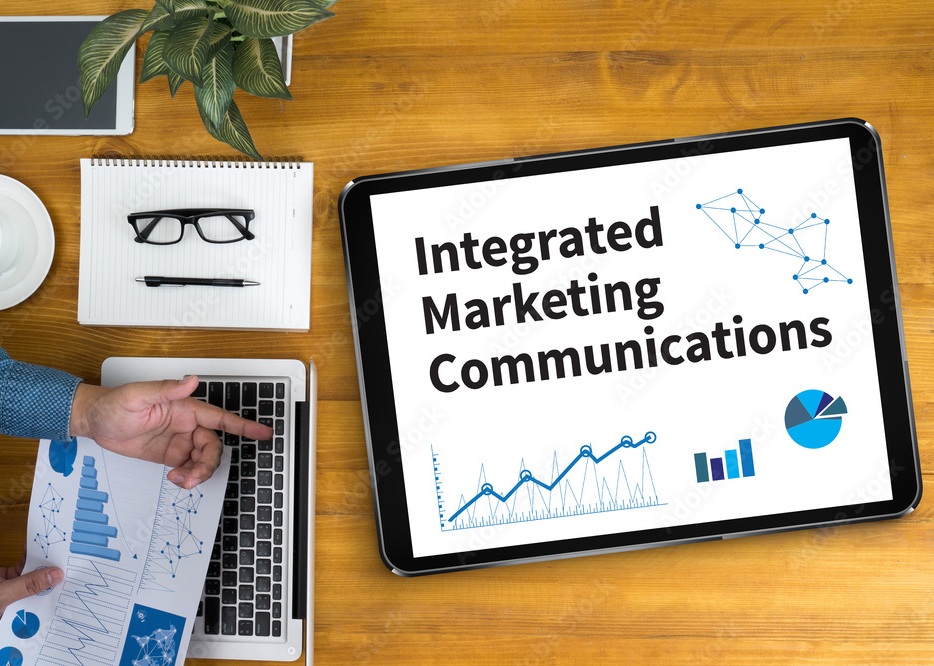Unlocking Marketing Excellence: Role Of Integrated Marketing Communication
In today’s fast-paced and highly competitive business landscape, companies are continuously seeking innovative ways to effectively reach and engage their target audience. Integrated Marketing Communication (IMC) has emerged as a powerful and strategic approach that unifies all marketing efforts to deliver a consistent and compelling message to customers. In this introductory section, we will delve into the essence of IMC, understand its significance in modern marketing strategies, and explore the fundamental elements that drive its success.
Definition of Integrated Marketing Communication (IMC)
Integrated Marketing Communication, commonly known as IMC, is a strategic marketing approach that aims to deliver a unified and seamless brand message across multiple communication channels. It involves the integration of various marketing tools, tactics, and messages to ensure that all aspects of a brand’s communication are consistent, coherent, and mutually reinforcing. IMC recognizes the importance of synergy among marketing efforts, aligning them towards a common goal of creating a powerful and memorable brand presence.
Importance of IMC in Modern Marketing Strategies
In today’s digitally connected world, consumers are bombarded with a myriad of marketing messages daily. This saturation of information makes it increasingly challenging for brands to cut through the noise and capture their audience’s attention. IMC plays a crucial role in addressing this challenge by fostering a holistic and customer-centric approach.
By adopting IMC, businesses can break down silos between different marketing functions, departments, and channels. This synchronization enables a seamless flow of communication, where every message and touchpoint reinforces the brand’s core values, positioning, and promise. The result is a more impactful and memorable brand experience that resonates with customers, building trust and loyalty over time.
Overview of the Key Elements of IMC
At the heart of IMC lies a set of key elements that contribute to its effectiveness:
- Consistent Messaging: IMC emphasizes the importance of maintaining a consistent brand message across all marketing channels, including advertising, social media, public relations, and more. Consistency enhances brand recognition and reinforces the brand’s unique value proposition.
- Omni-Channel Approach: IMC embraces an omni-channel strategy, where brands engage with customers through various touchpoints seamlessly. This approach ensures that customers receive a consistent brand experience, regardless of the channel they interact with.
- Target Audience Focus: Understanding the needs, preferences, and behaviours of the target audience is crucial in IMC. By tailoring messages to specific customer segments, businesses can deliver more personalized and relevant communication.
- Data-Driven Insights: IMC relies on data and analytics to measure the performance of marketing efforts. Analyzing customer data and feedback enables businesses to make data-driven decisions and refine their communication strategies for better results.
In the subsequent sections, we will delve deeper into each of these key elements, exploring how they contribute to the success of Integrated Marketing Communication. By harnessing the power of IMC, businesses can create a cohesive and compelling brand narrative that leaves a lasting impression on their audience, setting the stage for brand growth and success in today’s dynamic marketing landscape.

Role Of Integrated Marketing Communication
I. Creating a Unified Message
A. The Significance of Consistent Messaging Across All Marketing Channels
Consistency is the cornerstone of successful Integrated Marketing Communication. When a brand communicates a consistent message across all marketing channels, it reinforces its identity, values, and promises. This coherence builds brand recognition and trust among customers, as they encounter a unified experience regardless of where they interact with the brand. Consistent messaging eliminates confusion, fosters credibility, and ensures that customers can easily identify and connect with the brand’s essence.
B. Developing a Strong Brand Identity and Value Proposition
A robust brand identity serves as the foundation for IMC. It involves defining the brand’s personality, visual elements, voice, and mission. By developing a compelling and distinct brand identity, businesses can differentiate themselves from competitors and leave a lasting impression on their audience. A clear value proposition further reinforces the brand’s unique offering and positions it as the solution to customers’ needs or challenges. A well-crafted value proposition communicates the benefits customers can expect and why the brand stands out among alternatives.
C. Aligning Messaging with the Target Audience’s Preferences and Needs
Understanding the target audience is vital in IMC. Brands must delve deep into their customers’ preferences, pain points, aspirations, and communication preferences. This knowledge allows businesses to tailor their messaging to resonate with the audience effectively. Whether it’s addressing specific pain points, evoking emotions, or appealing to aspirations, aligning messaging with the target audience’s preferences and needs enhances the relevance and impact of the communication.
II. Utilizing Multiple Marketing Channels
A. Exploring Various Marketing Channels (e.g., Digital, Print, Social Media, etc.)
In today’s diverse media landscape, businesses have a plethora of marketing channels at their disposal. Digital platforms, print media, social media, email marketing, and more offer distinct opportunities to reach and engage with the target audience. Exploring various marketing channels enables brands to meet their audience where they are, increasing the likelihood of reaching a broader and more diverse customer base.
B. The Synergy of Combining Traditional and Digital Marketing Efforts
In IMC, the integration of traditional and digital marketing efforts creates a powerful synergy. Traditional marketing, such as TV ads, radio, and print, reaches a broad audience and reinforces brand awareness. Digital marketing, on the other hand, provides the advantage of targeting specific demographics, tracking performance, and engaging with customers interactively. Combining these approaches creates a holistic marketing strategy that maximizes the brand’s impact and visibility.
C. Maximizing Reach and Engagement Through an Omni-Channel Approach
The omnichannel approach is a key component of IMC, where brands ensure a seamless experience for customers across all touchpoints. Whether customers interact with the brand through the website, mobile app, social media, physical stores, or customer service, the messaging and brand experience remain consistent. This integrated approach increases the brand’s reach and engagement potential, as customers can seamlessly transition between different channels without feeling disconnected.
By creating a unified message and utilizing multiple marketing channels effectively, businesses can harness the power of Integrated Marketing Communication to establish a compelling brand presence, build meaningful relationships with customers, and achieve marketing success in a dynamic and interconnected world. In the subsequent sections, we will continue to explore other critical elements of IMC, uncovering how they contribute to a cohesive and customer-centric marketing strategy.
III. Building Customer Relationships
A. Using IMC to Foster Meaningful Connections with Customers
At the heart of Integrated Marketing Communication lies the goal of building strong and lasting relationships with customers. IMC enables brands to go beyond one-way communication and engage customers on a deeper level. By delivering consistent and personalized messages, brands can connect with their audience emotionally and intellectually. Building meaningful connections fosters customer loyalty and advocacy, as customers feel understood, valued, and appreciated by the brand.
B. Creating Personalized Experiences Through Targeted Communication
One of the remarkable advantages of IMC is its ability to tailor communication to specific customer segments. By analyzing customer data and preferences, brands can deliver personalized experiences that resonate with individual needs. Whether it’s sending personalized emails, targeted social media ads, or relevant content recommendations, IMC empowers brands to speak directly to the interests and desires of each customer, enhancing engagement and satisfaction.
C. The Role of Customer Feedback and Data Analysis in Improving Communication Strategies
In IMC, customer feedback and data analysis play a pivotal role in shaping communication strategies. Listening to customer feedback, whether through surveys, reviews, or social media interactions, provides valuable insights into customer perceptions and needs. Data analysis allows brands to measure the effectiveness of their communication efforts, identify areas for improvement, and make data-driven decisions. By continuously refining communication strategies based on customer insights, brands can create more impactful and relevant messages that resonate with their audience.

IV. Enhancing Brand Visibility and Recall
A. The Impact of Consistent Branding on Brand Recognition
Consistency in branding is a key factor in enhancing brand visibility and recognition. A cohesive and well-defined brand identity, including logos, colours, and taglines, helps customers easily identify and differentiate the brand from competitors. Through IMC, consistent branding is reinforced across all marketing channels, leaving a strong imprint on customers’ minds. As customers encounter the brand consistently, they are more likely to remember it and recall it when making purchase decisions.
B. Leveraging Repetition and Frequency in IMC Campaigns
Repetition and frequency are powerful tools in IMC campaigns. By repeatedly exposing customers to the brand’s messaging through various channels, brands increase the chances of their message being noticed and retained. Strategic repetition helps reinforce the brand’s key messages and value proposition, leaving a lasting impression on customers. Combining repetition with the right frequency ensures that the brand remains top-of-mind for customers when they consider relevant products or services.
C. Employing Storytelling and Emotional Appeal to Increase Brand Recall
Storytelling and emotional appeal are compelling elements of IMC that create a strong emotional connection between the brand and its customers. By crafting narratives that evoke emotions and resonate with customers’ experiences, brands can leave a lasting impression and foster brand loyalty. Emotional storytelling not only increases brand recall but also encourages customers to share their positive experiences with others, driving word-of-mouth marketing.
By focusing on building customer relationships and enhancing brand visibility and recall, brands can leverage the power of Integrated Marketing Communication to create a customer-centric and impactful marketing strategy. The next sections of the blog will continue to explore additional elements of IMC, uncovering how businesses can deliver a consistent and engaging brand experience across different touchpoints for sustained success.

V. Measuring the Effectiveness of IMC
A. Key Performance Indicators (KPIs) for Evaluating IMC Campaigns
To determine the success of Integrated Marketing Communication campaigns, businesses utilize Key Performance Indicators (KPIs) as measurable metrics. KPIs serve as quantitative benchmarks to assess the impact of marketing efforts. Common KPIs for evaluating IMC campaigns may include website traffic, click-through rates, conversion rates, social media engagement, customer retention rates, and return on investment (ROI). By tracking these KPIs, brands can gauge the effectiveness of their communication strategies and identify areas for improvement.
B. Analyzing Data and Customer Insights to Assess Success
Data analysis and customer insights are essential components of evaluating IMC’s success. By delving into customer behaviour, preferences, and feedback, businesses can gain valuable information about the reception and impact of their communication efforts. Analyzing data helps identify which marketing channels and messages resonate best with the target audience. Customer insights provide valuable feedback that can be used to refine communication strategies and enhance future campaigns.
C. Making Data-Driven Adjustments for Continuous Improvement
IMC’s strength lies in its adaptability and agility. With data-driven insights in hand, businesses can make informed adjustments to their communication strategies. Whether it’s optimizing messaging, reallocating resources to more effective channels, or refining target audience segments, data-driven adjustments allow brands to continuously improve their IMC campaigns. This iterative process ensures that communication efforts remain relevant and aligned with evolving customer needs and preferences.
VI. Case Studies: Successful IMC Campaigns

Coca-Cola:
Coca-Cola, one of the world’s most renowned brands, owes much of its success to its adept Integrated Marketing Communication (IMC) strategies. With a rich history of utilizing television, radio, and print advertising, the company has effectively reached its target audience. Furthermore, Coca-Cola has embraced the digital era, leveraging social media and its website to expand its reach to a broader demographic.

Nike:
Nike exemplifies effective IMC implementation, having masterfully employed television and print advertising to connect with its target audience. In addition to traditional methods, the company has adeptly adopted Pay-Per-Click (PPC) advertising, Search Engine Optimization (SEO), and social media to broaden its appeal.
Nike’s consistency in packaging design, utilizing the same colours, logos, and fonts across all channels, has bolstered brand identity, leading to heightened brand awareness and increased sales.

Ford:
Ford stands as a prime example of successful IMC utilization, incorporating advertising as a key element of its strategy since the early days of the automotive industry.
In a harmonious blend of traditional and modern approaches, Ford seamlessly integrates new advertising avenues alongside conventional methods to effectively reach potential customers. By employing multiple channels, the company delivers a consistent message, yielding impressive brand awareness and driving sales.

Apple:
Renowned for its popularity and visionary marketing, Apple leverages an array of channels, including television, radio, print, and digital mediums, to connect with its target audience.
Building on the foundation set by the late Steve Jobs, Apple adeptly combines traditional and innovative approaches in its IMC strategies. This comprehensive approach ensures an impactful message reaches consumers, reinforcing brand loyalty and propelling sales.
Components and Outcomes of these campaigns
Let’s analyze the components and outcomes of the marketing campaigns for each of the mentioned companies:
Coca-Cola:
Components:
- Traditional Advertising: Coca-Cola’s long-standing success can be attributed to its effective use of traditional advertising channels like television, radio, and print. These mediums have allowed the company to create memorable and emotionally resonant campaigns that reach a vast audience.
- Digital Marketing: In recent years, Coca-Cola has embraced digital channels, such as social media and its website, to engage with a broader demographic and stay relevant in the digital age.
- Brand Consistency: Coca-Cola maintains a consistent brand image across all its communication channels, using iconic red and white colours, a distinctive logo, and uplifting messaging, which helps reinforce its brand identity.
Outcomes:
- High Brand Awareness: The consistent and widespread advertising campaigns have ensured that Coca-Cola is a household name known worldwide.
- Emotional Connection: Coca-Cola’s marketing emphasizes emotions, happiness, and shared experiences, leading to a strong emotional connection with consumers.
- Global Presence: Through its integrated marketing efforts, Coca-Cola has achieved a dominant market presence in almost every country, contributing to its global success.
Nike:
Components:
- Traditional Advertising: Nike’s effective use of television and print advertising has played a crucial role in creating powerful and iconic campaigns that resonate with their target audience.
- Digital Marketing: By employing PPC advertising, SEO, and social media, Nike has further expanded its reach and engaged with tech-savvy consumers.
- Brand Identity: Nike’s consistent use of its recognizable “swoosh” logo, signature font, and motivational messaging reinforces its brand identity and appeals to its target audience.
Outcomes:
- Strong Brand Loyalty: Nike’s marketing campaigns have fostered a sense of loyalty and admiration among consumers, with many identifying themselves as “Nike fans.”
- Athlete Endorsements: Nike’s association with top athletes through endorsements has boosted its brand credibility and positioned the company as a leader in sports and athletic apparel.
- Market Leadership: Through its effective IMC strategies, Nike has maintained its position as a market leader in the sports and athletic footwear industry.
Ford:
Components:
- Traditional Advertising: Ford’s historical use of traditional advertising, such as television and print, has been a foundational element of its marketing campaigns.
- Digital Integration: Ford has embraced digital marketing to complement its traditional efforts, reaching tech-savvy consumers through online ads, social media, and interactive experiences.
- Consistent Messaging: Ford’s consistent messaging across various channels ensures that consumers receive a unified brand experience.
Outcomes:
- Brand Recognition: Ford’s longstanding advertising efforts have contributed to high brand recognition and familiarity among consumers.
- Product Awareness: Through its multi-channel approach, Ford effectively communicates the features and benefits of its vehicles, generating interest and consideration among potential buyers.
- Competitive Edge: Ford’s strategic use of IMC has helped it maintain competitiveness in the automotive industry by reaching diverse audiences and staying relevant in a rapidly evolving market.
Apple:
Components:
- Diverse Channels: Apple’s IMC strategy involves utilizing various advertising channels, such as television, radio, print, and digital marketing, to engage consumers from different demographics.
- Innovative Messaging: Apple’s marketing campaigns focus on innovation, cutting-edge technology, and lifestyle enhancement, positioning their products as must-have items.
- Brand Aesthetics: Apple’s minimalist design approach and consistent branding across all platforms contribute to a strong and recognizable brand identity.
Outcomes:
- Brand Loyalty: Apple has cultivated a fiercely loyal customer base through its innovative products and effective marketing, leading to repeat purchases and a strong fan community.
- Premium Brand Perception: Apple’s marketing campaigns emphasize the premium quality and exclusivity of its products, allowing the company to command higher price points in the market.
- Cultural Impact: Apple’s innovative and aspirational messaging has contributed to its cultural significance, making it a symbol of modern technology and lifestyle.
Overall, these companies’ successful IMC strategies have resulted in strong brand awareness, increased sales, and market leadership. Their ability to combine traditional and digital channels, maintain consistent brand messaging, and create emotional connections with consumers have been key factors in achieving these outcomes.
Lessons learned from these successful case studies
From the successful case studies of Coca-Cola, Nike, Ford, and Apple, several valuable lessons can be learned for creating effective Integrated Marketing Communication (IMC) strategies:
By applying these lessons, businesses can create comprehensive and impactful IMC strategies to connect with their audiences, enhance brand visibility, and drive business growth.
VII. Challenges and Best Practices in IMC
A. Common Obstacles Faced in Implementing IMC
While Integrated Marketing Communication offers numerous benefits, its successful implementation is not without challenges. Businesses often encounter obstacles such as internal silos, lack of coordination among marketing teams, inconsistent messaging, budget constraints, and difficulties in measuring ROI accurately. Addressing these hurdles is essential to ensure a seamless and effective IMC strategy.
B. Strategies to Overcome Challenges and Ensure Seamless Integration
To overcome challenges, businesses can adopt several strategies. First, fostering a culture of collaboration and communication among different departments encourages seamless integration of marketing efforts. Breaking down silos enables a unified approach to communication. Second, establishing clear communication guidelines and brand standards ensures consistent messaging across all channels. Third, investing in robust analytics tools and attribution models helps measure the impact of IMC efforts accurately, facilitating data-driven decision-making.
C. Best Practices for Optimizing IMC for Different Industries and Business Sizes
IMC is adaptable and can be optimized for various industries and business sizes. One best practice is to conduct thorough market research and customer analysis to understand the unique needs and preferences of the target audience. Tailoring communication strategies to address specific industry challenges and customer pain points enhances the relevance and impact of IMC efforts. Additionally, considering the budget and resources available is crucial in designing a practical and effective IMC plan that aligns with the organization’s capabilities.
VIII. Future Trends in Integrated Marketing Communication
A. Emerging Technologies and Their Impact on IMC
As technology continues to evolve, it will significantly shape the future of IMC. Emerging technologies like virtual reality (VR), augmented reality (AR), and artificial intelligence (AI) will revolutionize customer experiences. Brands can leverage VR and AR to offer immersive and interactive content, while AI can personalize communication at scale, tailoring messages to individual preferences in real-time.

B. The Role of AI and Automation in IMC Strategies
AI and automation will play a central role in IMC strategies, automating repetitive tasks, and enabling marketers to focus on creativity and strategy. AI-powered chatbots will facilitate personalized customer interactions, providing instant support and information. Moreover, AI-driven data analysis will generate actionable insights, guiding brands in crafting more effective communication strategies.
C. Predictions for the Future of Integrated Marketing Communication
In the future, IMC is poised to become more customer-centric and data-driven. Brands will increasingly adopt an omnichannel approach, providing consistent and seamless experiences across physical and digital touchpoints. IMC strategies will emphasize emotional storytelling and purpose-driven marketing to connect with customers on a deeper level.
As we navigate the challenges and embrace the best practices of IMC, and explore the future trends that will shape its landscape, businesses can unlock the true potential of Integrated Marketing Communication. By continuously adapting to evolving consumer behaviours and technological advancements, brands can create impactful, customer-centric campaigns that resonate with their audience and drive sustainable growth in an ever-changing marketing landscape. The final section of this blog will conclude our exploration of Integrated Marketing Communication, reinforcing its significance and encouraging businesses to embrace this transformative approach for marketing success.
Conclusion
Throughout this exploration of Integrated Marketing Communication (IMC), we have delved into the essence of this strategic approach and its impact on modern marketing. IMC stands as a powerful method that unifies all marketing efforts, ensuring a consistent and compelling brand message across multiple channels. By aligning messaging, targeting the right audience, and utilizing various marketing platforms, IMC empowers businesses to create a cohesive and memorable brand presence.
A cohesive and customer-centric approach is at the core of IMC’s success. By recognizing and understanding the preferences, needs, and emotions of the target audience, brands can develop personalized and relevant communication that resonates deeply with customers. Consistent branding and storytelling further reinforce the brand identity, fostering strong emotional connections and loyalty among consumers.
As the marketing landscape evolves, the need for a holistic and integrated marketing strategy becomes more crucial than ever. We encourage businesses to embrace the power of Integrated Marketing Communication to unlock new opportunities and enhance their marketing effectiveness. By breaking down internal silos, implementing data-driven adjustments, and leveraging emerging technologies, brands can forge meaningful relationships with customers and achieve sustainable growth.
Final Words
As you embark on your marketing journey, we hope this comprehensive exploration of Integrated Marketing Communication serves as a source of inspiration and guidance. Embrace the principles of IMC, leverage its potential, and let it propel your brand towards a future filled with success, customer satisfaction, and enduring growth. By adopting an integrated approach to marketing, your brand can transcend boundaries and make an indelible mark in the hearts and minds of your target audience. So, step into the world of Integrated Marketing Communication and witness how its transformative power can elevate your brand to new heights of marketing excellence.

